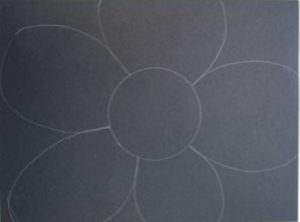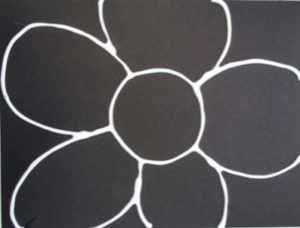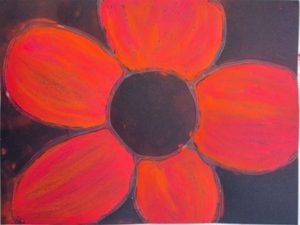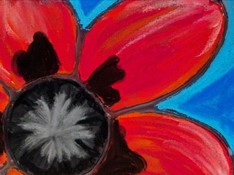In honour of Remembrance Day, here is a beautiful visual arts activity we do at our CEFA Early Learning schools. I also wrote an article on how to help your child contribute on Remembrance Day, which would give this activity a bit more context instead of just being an art project. you can find the article, plus other ideas to try on that day, here.
This activity is excellent for learning visual arts techniques such as how to use pastels, how to blend colours together, how to use mixed mediums and how to cover every space of a page. The colour are also very intense, which leaves you with a beautiful piece – Georgia O’Keeffe would be proud! Please let me know in the comments below if you try it at home and if your child enjoyed it!
Best Ages for This Activity
Three to five
How to Make It
You will need:
- 1 sheet of black construction paper
- School glue
- Pastels
- A pencil
- A blending stick
- Photos of real poppies to examine (I included them here)
- Paintings of poppies by Georgia O’Keefe to examine (I included them here)
- An actual real poppy to study (optional)
Let’s get started!
- Talk to your child about the significance of Remembrance Day. This article will give you some pointers on the matter.
- Show them the photos of real poppies (here) and notice the different colours, the petals, etc.
- Show them the paintings of poppies by Georgia O’Keeffe (here) and study her work. Did she use more than one shade of red when painting them? What other colours? Did she draw the flowers to cover the whole page? Sometimes they were so big that they didn’t even fit on her canvas! What do they think of her paintings? What do they like? What would they change I they were to paint or draw poppies? Etc.
- Ask them if they would like to try drawing a poppy using pastel colours and glue.
- Cover your table or working surface with newspaper as the pastels can be a bit messy. Choose a work area that is not carpeted.
- Set up the material together (paper, pastels, pencil and glue)
- Begin by drawing a very large poppy on your sheet of paper with your pencil:

- Trace the outline of the poppy with white glue and let it dry completely before continuing to the next step. To dry it, leave it very flat so the glue does not run.

- When completely dry, colour the inside of the petals in red, then add a different type of red on top of it to give it depth.

- Once both colours fully cover each petal, blend them using your fingers. If your child does not like to get their fingers dirty, you can use a q-tip or a blending stick to do it. Most children love this technique of blending colours right on their drawing! Once finished, blow off the drawing to remove the excess pastel on it (you might want to do this outside or above the kitchen sink)
- Add the rest of the details in black, then grey (blend the grey into the black):

- Colour the rest of the page in any colour you choose. It can even be black and look beautiful!
- You can also add in a third red colour and blend, on the petals. Try a dark red!
Learning Opportunities
This activity is a bit more directed than I would like for visual arts, it teaches your child so many techniques to use that it is more than a “craft”. If you’d like, once you finish the drawing, why not leave the pastels accessible to your child and encourage them to draw something else – anything they want! The pastels provide a great opportunity for sensory learning. ask your child how it feels as they are using them, and blending the colours together, for added vocabulary and sensory awareness. Drawing is always an excellent fine motor skill and great precursor to writing as well. Your child will learn math if you focus on the colours used, the intensity of the colours and the pressure applied.
If you discuss Remembrance Day and explore it using the article for help (which was the whole purpose of this activity in the first place), your child will learn the habits of contribution and empathy.
Books Your Child Might Like
Toys Your Child Might Like